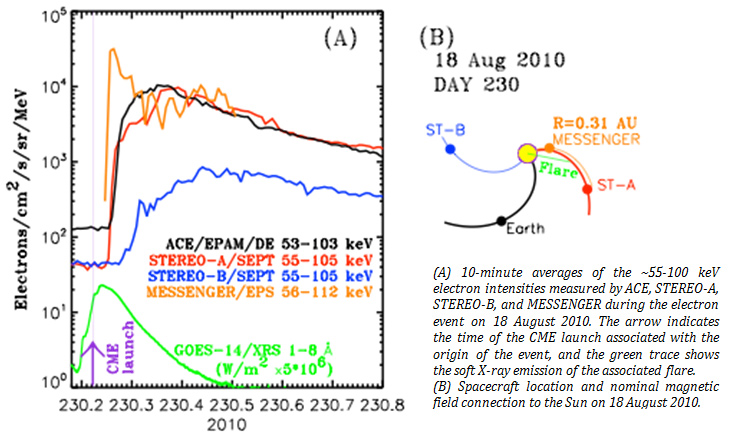I understand that the solar wind follows the Parker spiral shape of the Sun's magnetic field, thus it is possible for solar wind from a point on the opposite side of the Sun to reach Earth.
No, not really. The solar wind flows almost radially outward from the Sun. The magnetic field is nearly frozen-in to the plasma so they can be thought to move with one another (though be careful how far you take this somewhat careless statement).
Energetic particles generated during the initial launch of coronal mass ejections (CMEs) and/or solar flares are called solar energetic particles (SEPs). In general, these have energies in the range of 10s of keV to ~1 GeV for ions and several keV to a few MeV for electrons (e.g., see this answer for literature references).
I have seen it argued that solar energetic particles (SEPs) from a solar flare not visible to Earth can also reach Earth, following the Parker spiral. However, I'm not sure if this is true.
It is true that SEPs generated during a CME or solar flare that launches on a side far from that facing Earth can still send SEPs to Earth (e.g., see image below, which can be found at http://www.srl.caltech.edu/ACE/ACENews/ACENews139.html). They can even send SEPs to spacecraft on the far side of the Sun.
The problem is that the community is not certain whether this results from cross-field diffusion or if the magnetic field topology near the Sun is so complicated that it allows SEPs to stream to all sides of the Sun. This is one of the goals of the current Parker Solar Probe mission and the future SunRISE mission. That is, understanding the source and evolution of these energetic particle events is a top-level science priority for NASA and the Heliophysics community.
These SEPs are relativistic; surely they are not deflected that much by the magnetic field?
Why not? That they are relativistic actually makes it easier for them to diffuse in some ways because they cannot "turn" as quickly as the magnetic field geometry may change spatially. The gyroradius is proportional to $\gamma \ v_{\perp}$, where $\gamma$ is the Lorentz factor and $v_{\perp}$ is the particle speed orthogonal to the local magnetic field vector. So the more relativistic a particle becomes, the larger the gyroradius. The larger the gyroradius, the slower the changes in the magnetic field need to be in order for the particle to continue propagating along it.


